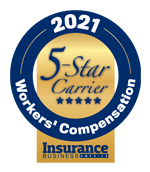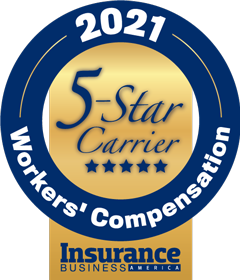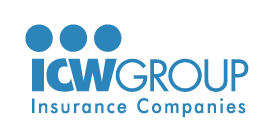
Best Loss control service programs
Five-Star Excellence Awards in Worker’s Compensation
Loss-control services offered by insurance providers can be an important part of any insurance policy for clients. They aim to reduce the possibility off a loss and limit the severity of any losses that do happen.
‘Interestingly enough, risk mitigation offerings were not highly rated at all by brokers – coming second last out of six factors they rated. While brokers may not value the risk mitigation, the effect of that mitigation – cheaper premiums – was the top rated factor they identified.
Loss control is pretty standard across the board,’ one of our respondents told IBA. ‘Most places offer a nurse hotline now and a website where insureds can download safety info and toolbox talks, but there aren’t a ton of standout offerings.’
Of those offerings, these are the loss-control services that our readers thought were the best in America.
5-Star Excellence Awards
- AIG
- Applied Underwriters
- Chubb
- Everest Insurance
- Key Risk - a Berkley Company
- Liberty Mutual Insurance
- Method Insurance Services
- Midwestern Insurance
- Alliance
- Travelers
- Zenith Insurance
- Zurich Insurance Group
What is loss control service?
A risk-management technique, loss control attempts to minimize the possibility of a loss and the severity of losses that do happen. Ideally, loss control programs can aid policyholders in reducing claims, helping insurers mitigate losses through safety and risk management approaches.
Loss control helps companies identify potential areas of loss or hazard – and, through establishing best practices, how to avoid them. Essential approaches workers’ compensation insurers can take include identifying hazards in the workplace; recommending appropriate safety and loss prevention controls; providing safety training materials for the company’s employees; and establishing best practices for maintaining a safe work environment.
The 6 essential loss control strategies
Companies should analyze insurable risks to determine the likelihood and severity of a loss. Afterward, one or a combination of these 6 essential loss control strategies could help companies reduce the possibility of a loss and/or limiting the severity.
1. Avoidance - Companies can eliminate potential loss by avoiding a particular risk altogether. For instance, construction companies can opt to halt a project in inclement weather. While risk avoidance is a simple method for controlling losses, it is sometimes impractical since it can impact revenue.
2. Prevention - Preventative measures can be implemented to reduce loss frequency, especially for unavoidable risks. Loss prevention measures such as adding surveillance cameras or lowering speed limits can break the sequence of events leading to a loss, making it less likely to happen.
3. Reduction - To minimize the severity of a loss, reduction measures can be applied before and after one occurs. By implementing a reduction strategy, the physical and financial impacts of a loss are reduced.
4. Separation - Companies can minimize the impacts of a single loss by isolating loss exposures from one another. Separating exposure units reduces a company’s dependence on single assets, activities, or persons, reducing individual losses.
5. Duplication - In the event a primary asset is damaged or destroyed, a company should keep backups, spares, or copies of critical property or information. Duplication, like separation, can reduce a company’s dependence on a single asset, activity, or person.
6. Diversification - Numerous projects, products, markets, or regions can help bear the brunt of loss exposures, preventing one event, or a series of events, from destroying the majority of a company’s assets.
How do you calculate expected loss insurance?
Insurance companies can assess the risks of monetary loss by correctly estimating the chances such an accident will happen and charging customers an amount equal to the expected loss. The calculation is the expected loss is equal to the probability of a loss, times the cost of the loss. Being risk-averse, most people will buy insurance even if the premium is more than the expected loss, rather than taking the risk themselves.
What is loss control inspection?
A loss control inspection confirms that an insurer’s underwriters have properly classified a business for assessing the risk. The inspection is also a chance for a company to tell its story – its history, employees, and products – and can help decide the best ways to avoid the costs of injuries, lessening the price of insurance, and lessening the lost productivity caused by the accidents.
The information loss control consultants collect can change depending on the company’s insurance coverage. The best preparation for businesses is to gather procedures and policies that are part of that business’s risk control policies. Another important preparation is to ensure that the most knowledgeable people are available to answer the loss control consultant’s questions.
What is a direct loss and an indirect loss?
Direct loss refers to the damage immediately inflicted by an accident or disaster, known in the insurance industry as ‘perils.’ For instance, if a hurricane demolishes a building, that damage, as well as damage to equipment, furniture, inventory, and other items inside would qualify as a direct loss, as would fire and smoke damage. Insurance policies usually specify whether or not they cover direct losses or ‘physical losses,’ in case of damage caused by a disaster.
For indirect losses, usually referred to as ‘consequential losses’ in insurance policies, the peril itself is not a factor. Instead, losses suffered are described as a consequence of the direct loss. The most obvious example is interruption to business. The example, in this case, after a hurricane destroys the roof of a business, the company cannot operate until the damage is fixed. The income lost during the rebuilding represents and indirect loss.
What are examples of risk retention?
Risk reduction can either be achieved through loss prevention or loss reduction. Loss prevention means to reduce the probability of a risk and loss reduction means minimizing the loss. An example of loss prevention would be the issue of drunk driving, which greatly increase the likelihood of an auto accident. Abstaining from alcohol before driving is a method of loss prevention that reduces the likelihood of an accident and, if an accident does happen, it reduces the severity of the losses.
Risk retention means to handle the unavoidable risk internally, usually because insurance can’t be bought, the insurance is too costly compared to the risk, or because it’s more cost-effective to deal with the risk within the business. Retained risk, usually, occurs more often, but has less of an impact. A typical example of risk retention to save funds is an insurance deductible, since a deductible is a limited risk and can save money on premiums for bigger risks. Companies retain many risks, or what is commonly referred to as self-insurance, due to the cost of commercial insurance, or because it is unavailable.
Keep up with the latest news and events
Join our mailing list, it’s free!



